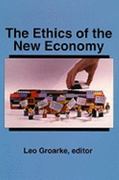Question
According to Intermediate Public Economics by Hindriks and Myles, Chapter 9, Sections 9.5-9.6 and Chapter 15, Sections 15.1-15.4. https://b-ok.cc/book/3403287/67df91/?wrongHash 1. In a competitive economy, the
According to Intermediate Public Economics by Hindriks and Myles, Chapter 9, Sections 9.5-9.6 and Chapter 15, Sections 15.1-15.4.
https://b-ok.cc/book/3403287/67df91/?wrongHash
1. In a competitive economy, the incidence of a commodity tax is
A) independent of whether it is levied on consumers or producers.
B) dependent on whether it is levied on consumers or producers.
C) always shared equally between consumers and producers.
D) none of the above.
2. In a competitive market, specific and ad valorem taxation are equivalent if
A) they raise the same tax revenue.
B) their economic incidence is identical.
C) specific tax and a VAT lead to the same price after tax.
D) all of the above.
E) none of the above.
3. In an imperfectly competitive market, if the VAT and the specific tax lead to the same
consumer price, the ad valorem tax raises
A) less tax revenue than a specific tax.
B) zero tax revenues.
C) more tax revenue than a specific tax.
D) less tax revenue than a profit tax.
4. In a two period life cycle model, the intertemporal budget constraint has a kink if
A) interest payments cannot be deducted but interest receipts are taxable.
B) interest payments can be deducted but interest receipts are not taxable.
C) all of the above.
D) none of the above.
5. There are some important decisions that the corporate tax may affect:
A) the decision on total physical investment.
B) the decision on the type of asset to purchase.
C) the decision on which way to finance investments.
D) all of the above.
E) none of the above.
6. The case of a tax overshifting (i.e., that the price after tax increases by more than the tax)
A) is only possible in the case of perfect competition and a perfectly elastic demand curve.
B) is only possible in the case of perfect competition and an inelastic demand curve.
C) is only possible in the case of perfect competition and a vertical demand curve.
D) is impossible with perfect competition, irrelevant of the elasticities.
Page 2 of 2
7. Based on Tobin's model of portfolio composition,
A) the tax element reduces the riskiness of the asset while the full loss offset reduces the
attractiveness of the risky asset.
B) the tax element increases the riskiness of the asset while the full loss offset reduces the
attractiveness of the risky asset.
C) the tax element reduces the attractiveness of the risky asset, and the full loss offset reduces the
riskiness of the asset.
D) the tax element increases the attractiveness of the risky asset, and the full loss offset reduces
the riskiness of the asset.
8. The main justifications for the corporate tax is that the corporate tax
A) protects the integrity of the personal income tax.
B) protects the government from having budget deficits.
C) is the least regressive tax.
D) none of the above.
For Questions 9 and 10: The following picture shows the demand and supply for solar
panels without any tax or subsidy (the supply curve is a horizontal line; the angle (?)
between the vertical axis and the demand curve has 45 degrees). Assume the government
pays a subsidy of $100 per solar panel sold to the producers.

Step by Step Solution
There are 3 Steps involved in it
Step: 1

Get Instant Access to Expert-Tailored Solutions
See step-by-step solutions with expert insights and AI powered tools for academic success
Step: 2

Step: 3

Ace Your Homework with AI
Get the answers you need in no time with our AI-driven, step-by-step assistance
Get Started


